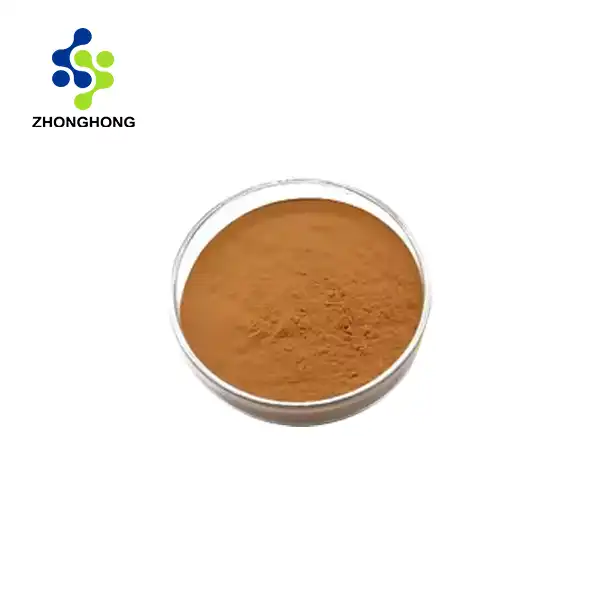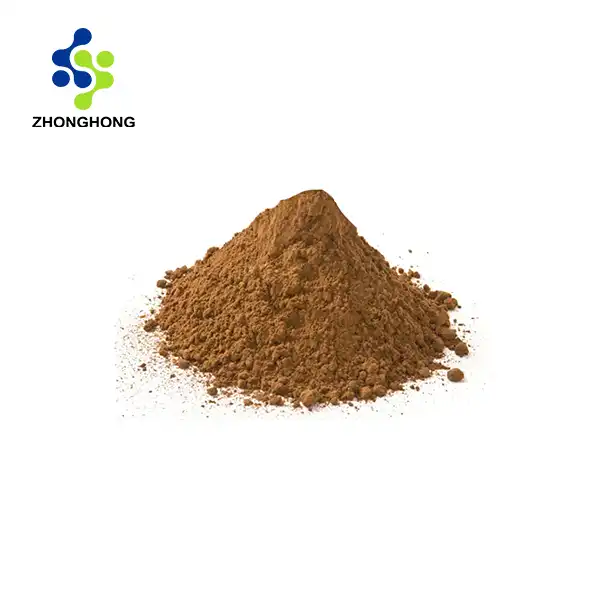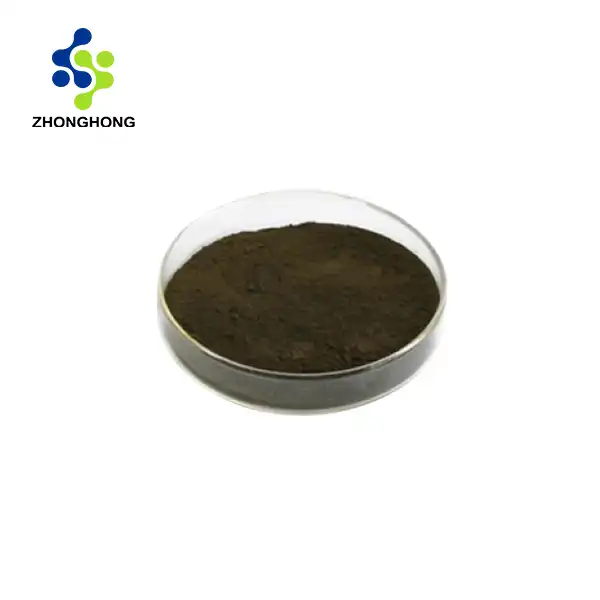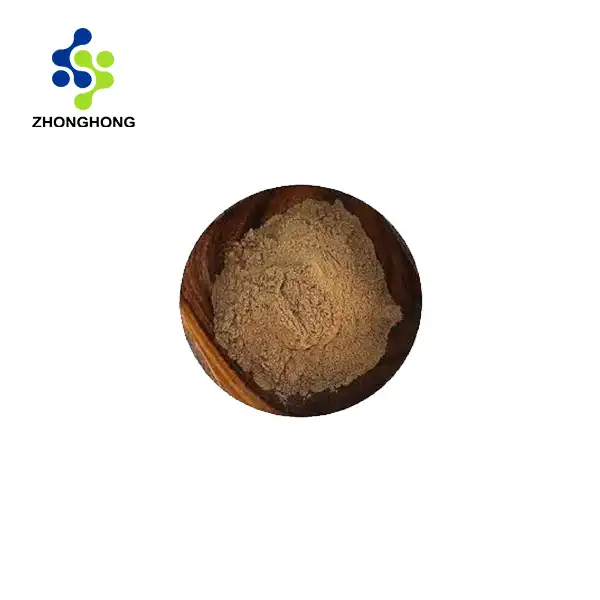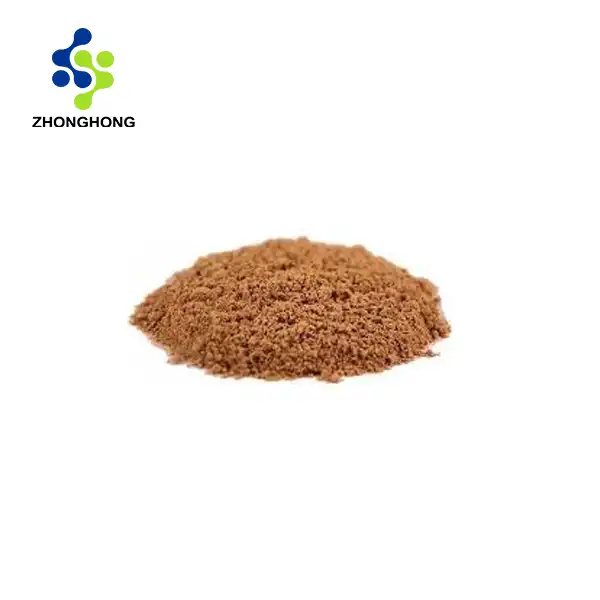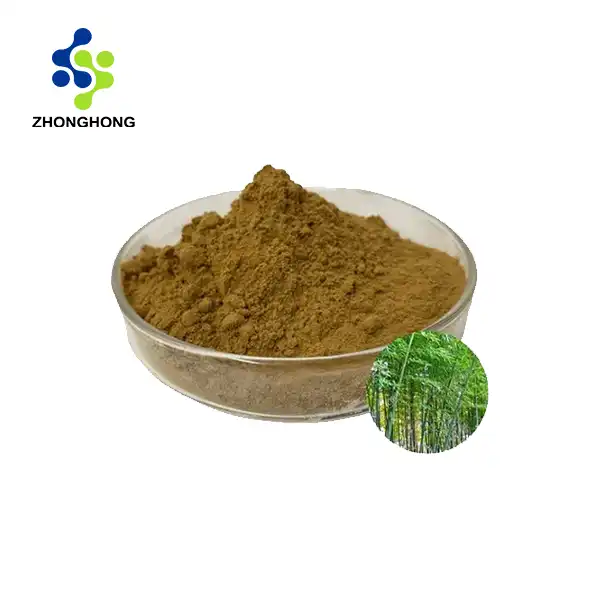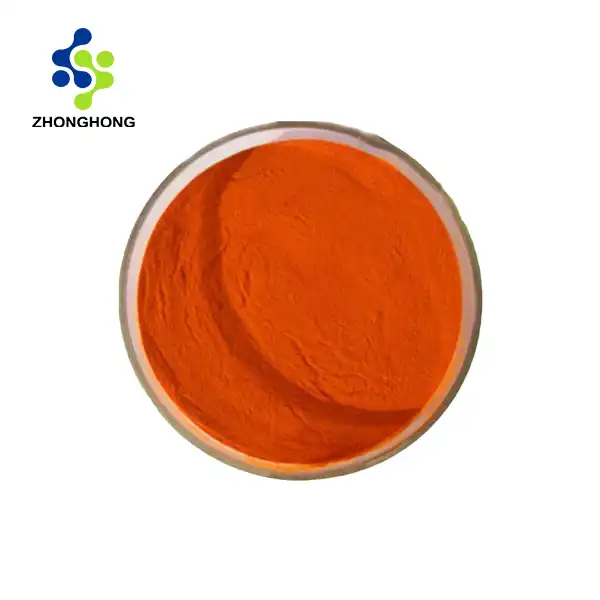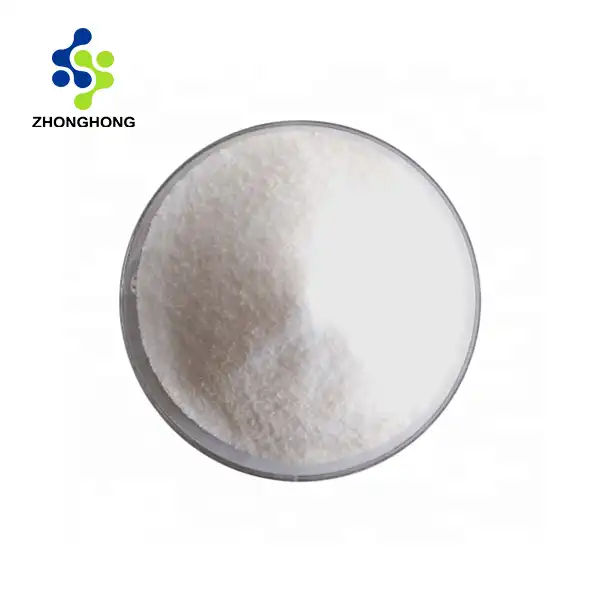Natural green tea extract cosmetic grade
2024-12-22 12:16:25
Green tea extract
[Overview][1,2] Green tea extract is the main extract of common green tea in my country. It is rich in nutrients, including tea polyphenols, catechins, caffeine, amino acids, vitamins and other nutrients. It has a good antioxidant effect because it contains more hydroxyl groups. Free radicals are biochemical products produced by the human body during its own metabolism and life activities. Excessive free radicals can cause a variety of diseases in the human body, which can be manifested as sagging and aging of the skin. Green tea extract has a good ability to remove DPPH free radicals, hydroxyl free radicals and superoxide anions. Green tea extract has a good antioxidant effect in cosmetics. It can combine with free radicals in the body to transform into inert substances, preventing free radical reactions in the body. It has a good therapeutic effect on skin aging. Moreover, it is a natural extract with high safety and can be widely used in the preparation of cosmetics.
[Main components of green tea extract]: Green tea extract contains a compound called tea polyphenols, which is much higher than other plants. Tea polyphenols is the general name for polyphenols in tea. Tea polyphenols are gray-white powdery solids or crystals, with astringent taste, easily soluble in water, ethanol, ethyl acetate, slightly soluble in oil, slightly hygroscopic, and can be oxidized into brown products in humid air. The content of tea polyphenols in green tea is relatively high, accounting for 20%~30% of the dry weight of tea leaves. Its main components are catechins, flavonoids and flavonols, anthocyanins, phenolic acids and phenolic acids. Flavanol compounds mainly composed of catechins account for 60-80% of the total amount of tea polyphenols.
[Biological activity of green tea extract]
After a large amount of basic research and clinical application in the medical community at home and abroad, it has been confirmed that tea polyphenols, as the main physiologically active substance in tea, have the following effects: lowering blood sugar, treating diabetes, lowering blood lipids, anti-cardiovascular disease, anti-cancer, anti-mutation, anti-virus, anti-allergy, anti-radiation, deodorization and detoxification, etc. Tea polyphenols have excellent antioxidant properties and significant free radical scavenging ability. The antioxidant effect of tea polyphenols is due to the fact that the phenolic hydroxyl groups on the B and C rings of catechins have the activity of providing protons and have a strong reducing ability. When unsaturated fatty acids in animal and plant oils produce oxide free radicals during the auto-oxidation process, the hydrogen donors on the hydroxyl groups can capture them, interrupting or delaying the chain reaction, thereby preventing the oil from becoming rancid and deteriorating, and achieving the purpose of oil anti-oxidation. Its scavenging rate for active free radicals is over 96%, making it an ideal natural substitute for BHT and BHA. Fried foods generally contain about 20% oil, which is very easy to oxidize and deteriorate after high-temperature frying. Adding tea polyphenols can extend its shelf life by 1 to 2 times. With the continuous deepening of people's research on this characteristic, tea polyphenols have a wide range of application and development space in health care, food, chemical industry, oil and fat industries.
【Preparation method of green tea extract】
Use clean water as solvent, heat the water bath to 90℃ for multiple extractions, combine the extracts and extract with an equal volume of chloroform, separate the chloroform phase and extract with ethyl acetate for multiple extractions, recover the solvent from the ethyl acetate phase and concentrate to near dryness, freeze-dry it and recrystallize it repeatedly with deionized water to obtain the fine product. Later, a new method was developed. Add 150 ml of deionized water to 100 ml of the concentrate at a ratio of 1:1.5, stir and precipitate to remove chlorophyll and oils, and move them to the refrigerator overnight. Transfer the supernatant and continue to vacuum concentrate until the volume is reduced by half to obtain the concentrate again. Transfer it to a separatory funnel and extract it with ethyl acetate in small amounts multiple times. After the extract is decompressed and the solvent is recovered, vacuum extract it into dry powder to obtain the finished product. This process method has low cost, is non-toxic and pollution-free, and has a higher yield than the traditional process.
【Green tea extract free radical removal effect】With the increase of green tea extract mass concentration, the scavenging rate of DPPH free radical, hydroxyl free radical and superoxide anion increases. The ability of green tea extract to scavenge DPPH free radical is lower than that of Vit C, but both have good scavenging rate, indicating that green tea extract has good ability to scavenge DPPH free radical; the ability of green tea extract to scavenge hydroxyl free radical is better than that of Vit C, and both have good ability to scavenge hydroxyl free radical.
【Inhibition of fatty acid synthase】【4】
The study found that green tea extract inhibited the ketone phthalide reduction reaction in the synthesis reaction, but the inhibition was weaker than that of the whole reaction, indicating that the ketone phthalide reduction center is one of the sites of action of green tea extract. The tea polyphenol content of West Lake Longjing with strong inhibitory ability is only slightly higher than that of Lu'an Guapian with weak inhibitory ability. The difference in their inhibitory ability should not be mainly caused by the difference in total tea polyphenol content. The weight loss and appetite suppression effect of Jingshan Maofeng with strong inhibitory ability on mice is significantly better than that of Lu'an Guapian, indicating that the weight loss effect of green tea may be related to its inhibition of fatty acid synthase.
[Application in hair cosmetics] [3] Green tea extract is rich in a variety of active ingredients such as tea polyphenols, polysaccharides, alkaloids, amino acids, proteins, vitamins, etc., and plays an important role in the fields of food, medicine, and cosmetics, such as anti-oxidation, anti-aging, anti-cancer, hypolipidemic, hypoglycemic, antibacterial, sunscreen, whitening, etc. The technology of green tea extract in skin cosmetics has been widely reported, and the use of green tea extract in hair cosmetics has been a hot topic in recent years. The phenolic hydroxyl group in green tea extract has a strong affinity and coagulation effect on keratin in hair and scalp, and has good cleaning and hair care effects, so it is a good additive for hair cosmetics. Green tea extract can promote the growth of human hair follicle papilla cells cultured in vitro in a dose-dependent manner, because green tea extract can not only promote the proliferation of hair follicle papilla cells, but also delay cell apoptosis, thereby prolonging the growth period of hair. Therefore, as a non-toxic and non-irritating natural plant extract, green tea extract is gradually being valued in hair cosmetics. Using green tea extract to prepare hair cosmetics such as shampoo, hair care, and hair dye meets the requirements of naturalness and safety.
【References】
【1】Xu Jun, Gao Zhenxing, Song Shuhong, et al. Research progress on green tea extract and its antiviral effect[J]. Chinese Journal of Agricultural Science, 2009, 25(16):79-82.
【2】Li Xiaojing, Wang Xinling. Application of green tea extract in hair cosmetics[J]. Anhui Agricultural Science, 2015(22):231-232.
【3】Gao Tongtong, Yan Zhiyong. Study on the antioxidant effect of tea polyphenols in green tea extract in cosmetics[J]. Chinese Journal of Aesthetic Medicine, 2015, 24(24):26-29.
【4】Zhang Rui, Xiao Wenping, Tian Weixi. Inhibitory effect of green tea extract on fatty acid synthase[J]. Journal of Yunnan University: Natural Science Edition, 2004(S2):42-47.
YOU MAY LIKE
_1728976869676.webp)
